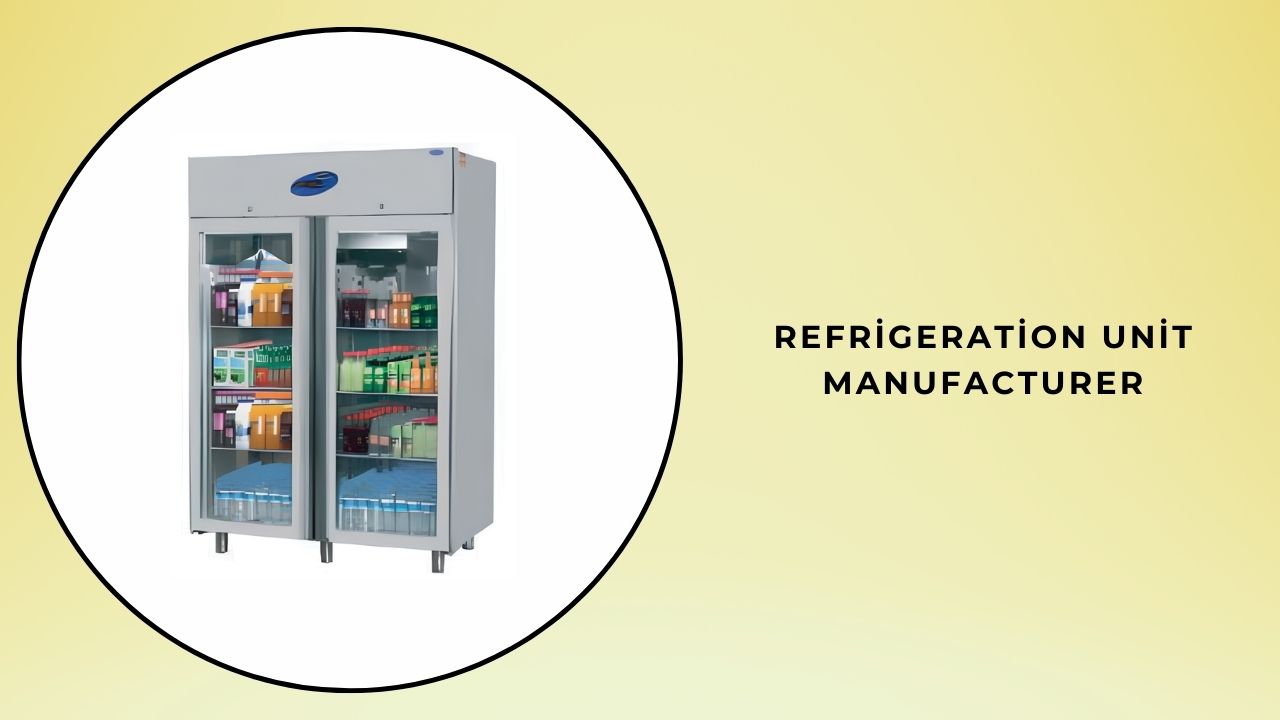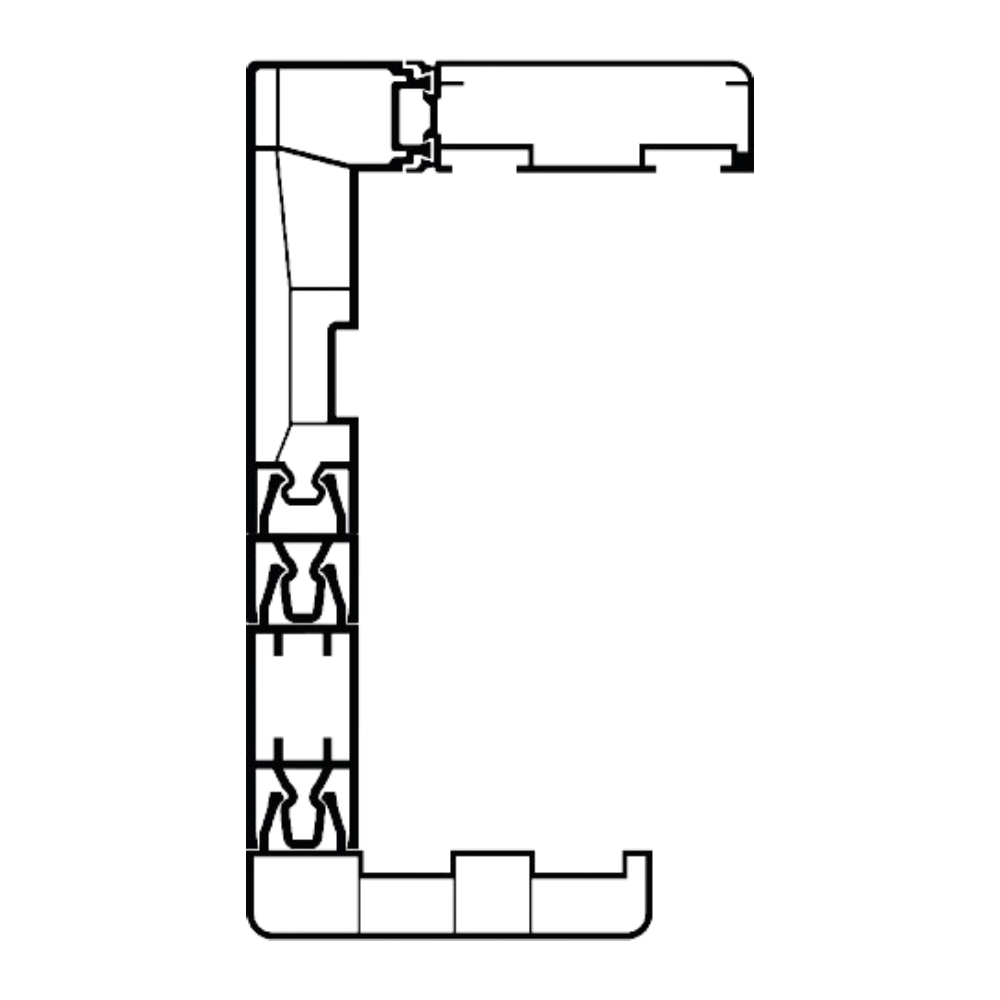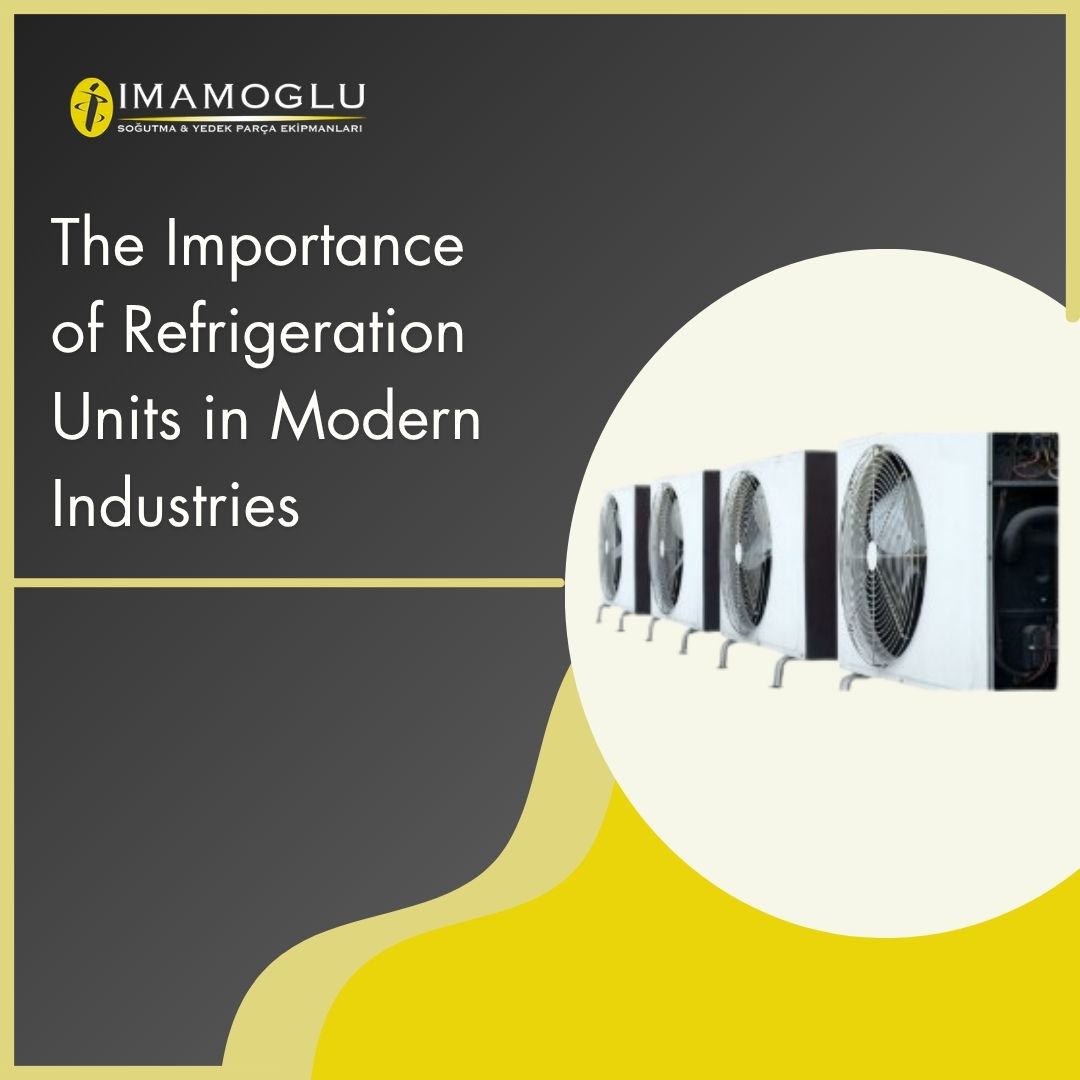The Importance of Refrigeration Units in Modern Industries
The Importance of Cooling Units in Modern Industries
Cooling units ensure the storage and transportation of products at correct temperatures in many industries, preserving the integrity and quality of the products. Whether in food processing, the pharmaceutical sector, or logistics, cooling units are of critical importance for the safe storage, transportation, and processing of temperature-sensitive products. The increasing demand for cooling units is closely related to the growth of global trade, the evolution of supply chain processes, and the rising awareness of sustainability in industries. Modern cooling technologies aim to balance efficiency, cost-effectiveness, and environmental responsibility.
In the food and beverage industry, cooling units are indispensable for ensuring the freshness and safety of products. The pharmaceutical industry relies on cooling units for the safe storage of vaccines and temperature-sensitive medications. Additionally, cooling units are essential in the transportation of cold chain products, ensuring that fruits, vegetables, meats, dairy products, and frozen goods reach their destinations perfectly.
Types and Applications of Cooling Units
Cooling units come in various types and configurations designed to meet the specific needs of different industries. Here are the most common types of cooling units and their application areas:
Commercial Cooling Units: These units are widely used in retail and commercial spaces such as supermarkets, restaurants, and grocery stores. Walk-in coolers, reach-in refrigerators, and freezer display cases are designed for storing a wide range of food and beverages. These cooling units must comply with strict food safety standards to keep products fresh.
Industrial Cooling Units: Industrial cooling systems are used in large food processing facilities and storage areas. These units are designed to meet large-scale cooling needs and are often customized for specific industrial applications. They play a perishable foods, chemicals, and pharmaceuticals, providing critical role in storage by preventing temperature fluctuations and spoilage through precise control.
Transport Cooling Units: Transport cooling units ensure that the temperatures of products are maintained during transit. Used in refrigerated transport vehicles, freezer trucks, and containers, these units keep temperature-sensitive products—such as fruits, dairy products, meats, and pharmaceuticals—within the desired temperature range during transportation. With the rise of global trade and increasing demand for fresh and frozen products, transport cooling systems are critical for the safety and quality of transported goods.
Refrigerated Storage Units: Refrigerated storage units are of critical importance in industries requiring long-term storage of large quantities of temperature-sensitive products. These units are equipped with advanced cooling systems designed to maintain appropriate temperatures and humidity levels, ensuring products remain safe and fresh. Cold storage facilities are used for storing not only food products but also pharmaceuticals and certain chemicals in controlled environments.

Cooling Unit Production Process
The production of cooling units involves critical processes, including design, component selection, assembly, testing, and quality control. Here’s an overview of this process:
1. Design and Planning: The design phase is the starting point for the production of a cooling unit. Engineers and designers work together to determine features such as capacity, energy efficiency, cooling power, and temperature control mechanisms. The design must also consider space requirements, installation needs, and compliance with industry standards.
2. Component Selection and Procurement: Cooling units consist of numerous components, such as compressors, evaporators, condensers, thermostats, and fans. Selecting high-quality components is crucial to ensure the unit operates long-lasting and efficiently. Manufacturers choose parts that meet the requirements set during the design phase and procure them to ensure optimal system performance.
3. Assembly: Once the components are ready, they are assembled into a functional cooling unit. The assembly process ensures that each component is correctly positioned and securely connected. Proper insulation must also be applied during assembly to minimize energy losses and enhance system efficiency.
4. Testing and Quality Control: After assembly, cooling units undergo thorough testing to verify compliance with required specifications. These tests include validation of temperature control capabilities, energy efficiency, leak detection, and overall system functionality. The units are tested under real-world conditions to ensure they deliver the expected performance in all applications. Units that pass quality control tests are prepared for shipment and installation.
Technological Advancements in Cooling Units
With the growing demand for energy-efficient and eco-friendly cooling solutions, technological advancements have significantly improved the performance of cooling units. Here are some notable innovations:
Energy Efficiency: One of the most significant advancements in cooling technology is the development of energy-efficient systems. Modern cooling units are designed with advanced compressors, energy-saving fans, and smart thermostats to reduce energy consumption while maintaining optimal cooling performance. These systems help businesses save on energy costs and reduce their carbon footprint.
Eco-Friendly Refrigerants: Traditional refrigerants harm the ozone layer, whereas eco-friendly refrigerants are less harmful and safer. Next-generation cooling systems use eco-friendly refrigerants with no ozone depletion and lower global warming potential. These refrigerants help reduce the environmental impact of cooling systems.
Smart Cooling Systems: Smart cooling systems utilize advanced sensors and IoT (Internet of Things) technology to enable remote monitoring and control of units. These systems send alerts in case of a malfunction or temperature fluctuation, allowing businesses to respond quickly. Smart cooling also enables predictive maintenance by detecting potential issues before they become significant problems, saving time and money.
Applications of Cooling Units
Cooling units have a wide range of applications across various industries. Here are some key examples:
Food Industry: Cooling units are indispensable in the food industry for ensuring the perishable products’ freshness and safety. They are used in food production facilities such as meat processing plants, dairy processing, and vegetable storage. These units control the temperature of stored products to keep them fresh and safe.
Pharmaceutical Industry: The pharmaceutical industry heavily relies on cooling units for storing temperature-sensitive medications and vaccines. A lapse in temperature control can cause drugs to lose their effectiveness, making reliable cooling systems critical for this sector. Cooling is also necessary for storing certain biological products, such as blood and tissue samples.
Logistics and Transportation: Cold transport plays a critical role in the logistics and distribution sector. These cooling units facilitate the transportation of fresh products, dairy, meats, and frozen foods—temperature-sensitive items. Proper temperature maintenance during transit is essential to ensure product quality and safety.
Sustainability and the Environmental Impact of Cooling Units
As industries seek sustainable solutions, cooling unit manufacturers focus on developing energy-efficient designs and eco-friendly refrigerants. New cooling units consume less energy and help reduce greenhouse gas emissions. The use of eco-friendly refrigerants and energy-efficient components minimizes the environmental impact of cooling systems while ensuring reliable performance.
Energy-efficient cooling units help businesses lower their operational costs while enhancing long-term sustainability. By adopting these systems, companies can reduce energy consumption and comply with eco-friendly regulations while maintaining the necessary temperature control for their products.
Conclusion
Cooling units are indispensable in industries such as food processing, the pharmaceutical sector, and logistics, where temperature control and product safety are critical. With technological advancements, cooling units have become more efficient, eco-friendly, and cost-effective. In a world where demand for cooling systems is increasing, cooling unit manufacturers are developing innovative solutions to meet industry needs.








